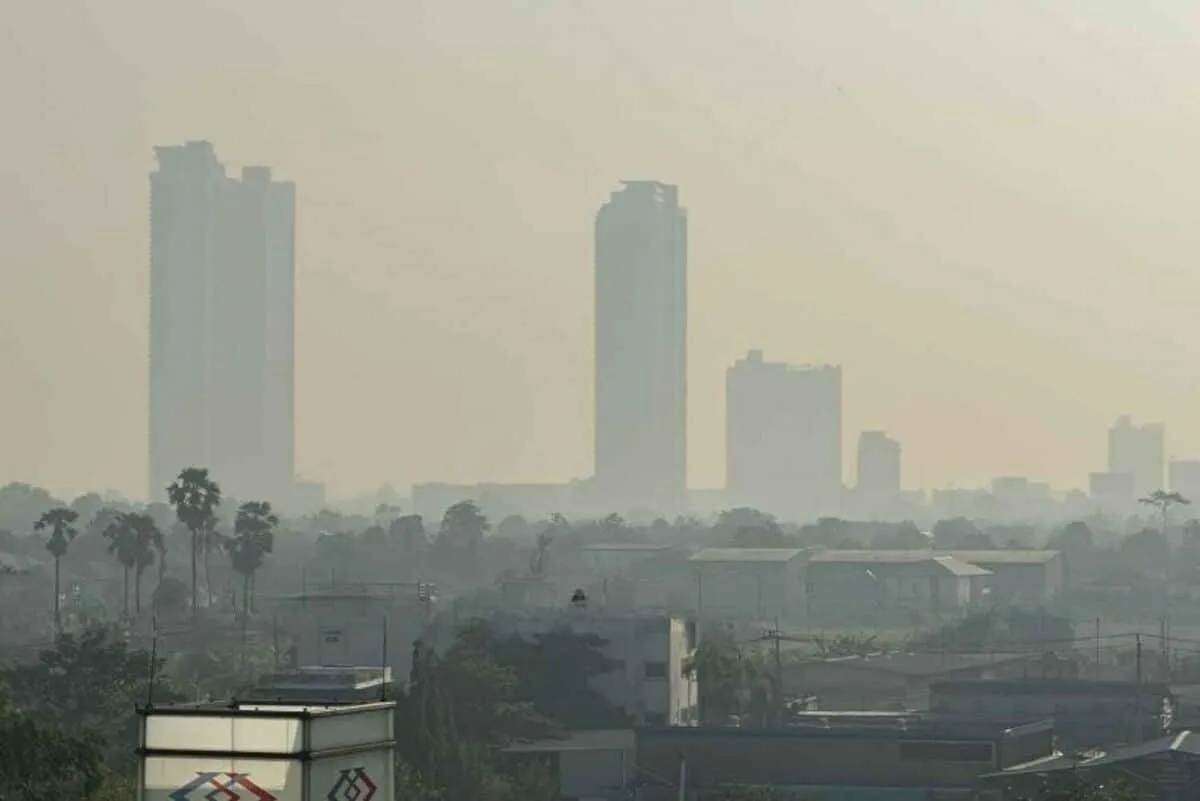A toxic air crisis is unfolding across Thailand, with 70 provinces experiencing hazardous PM2.5 dust levels. Dangerous air quality in Greater Bangkok and central Thailand is prompting urgent public health warnings and government action.
Toxic Air Crisis in Thailand: Dangerous Dust Levels Affect 70 Provinces
Thailand is grappling with a severe air quality crisis as ultrafine dust particles (PM2.5) reach hazardous levels across 70 of its 77 provinces, particularly in Greater Bangkok and central regions.
According to the Geo-Informatics and Space Technology Development Agency (GISTDA), PM2.5 levels have soared into the hazardous zone in 27 provinces, with Samut Sakhon recording the highest concentration at 144.8 micrograms per cubic meter (µg/m³)—almost four times the government’s safe limit of 37.5µg/m³.
Bangkok’s air quality is also concerning, with a PM2.5 reading of 125.1µg/m³, followed by other nearby provinces such as Nakhon Pathom (119.3), Nonthaburi (116.3), and Samut Prakan (115.3). Areas like Ratchaburi, Ayutthaya, and Sing Buri have also exceeded 100µg/m³, marking a significant health risk for residents.
Health Warnings and Urgent Measures
Prolonged exposure to such toxic air poses serious health risks, and residents are being advised to limit outdoor activities and wear masks. In addition to the hazardous zones, 43 provinces have been classified under the “orange-level” air quality, with readings between 37.7 and 75µg/m³, affecting sensitive groups. These provinces include Lopburi, Chon Buri, and Rayong.
While some coastal provinces, such as Phang Nga, Surat Thani, and Chumphon, recorded moderate air quality, seven provinces—Krabi, Chiang Rai, Chiang Mai, and Mae Hong Son—enjoyed relatively cleaner air, with PM2.5 levels as low as 12.4µg/m³ in Mae Hong Son.
The Causes Behind the Toxic Air
The smog crisis has been exacerbated by agricultural burning during the dry season, a major contributor to haze and particulate matter in the air. Vehicle emissions, industrial activity, and construction in cities like Bangkok also add to the pollution.
Government initiatives are underway, including monitoring air quality, promoting cleaner fuels, and discouraging agricultural burning. However, critics argue that current policies are insufficient and enforcement remains a challenge.
As the toxic haze persists, Thailand’s government faces increasing pressure to take stronger action to protect public health and reduce pollution levels across the country.


